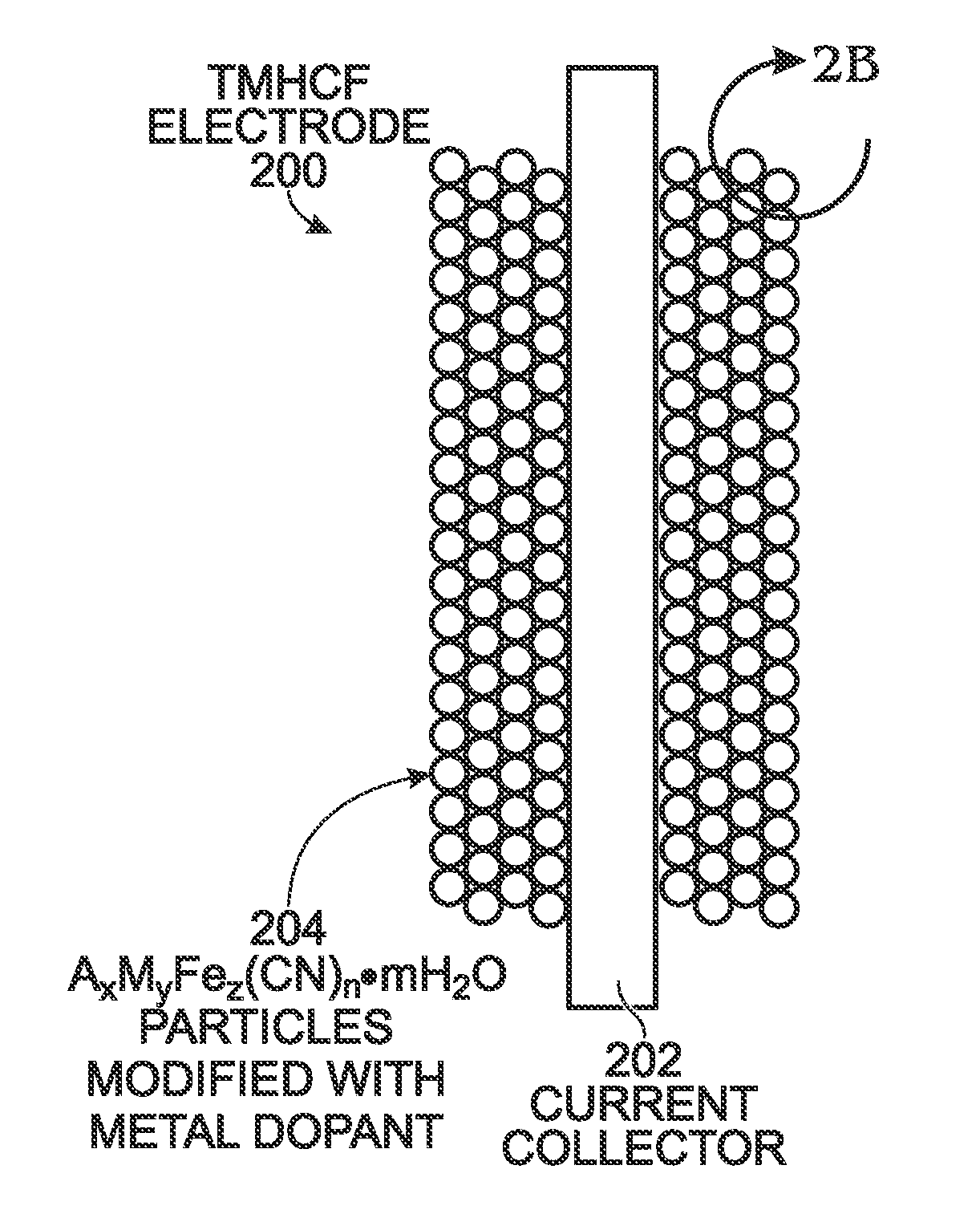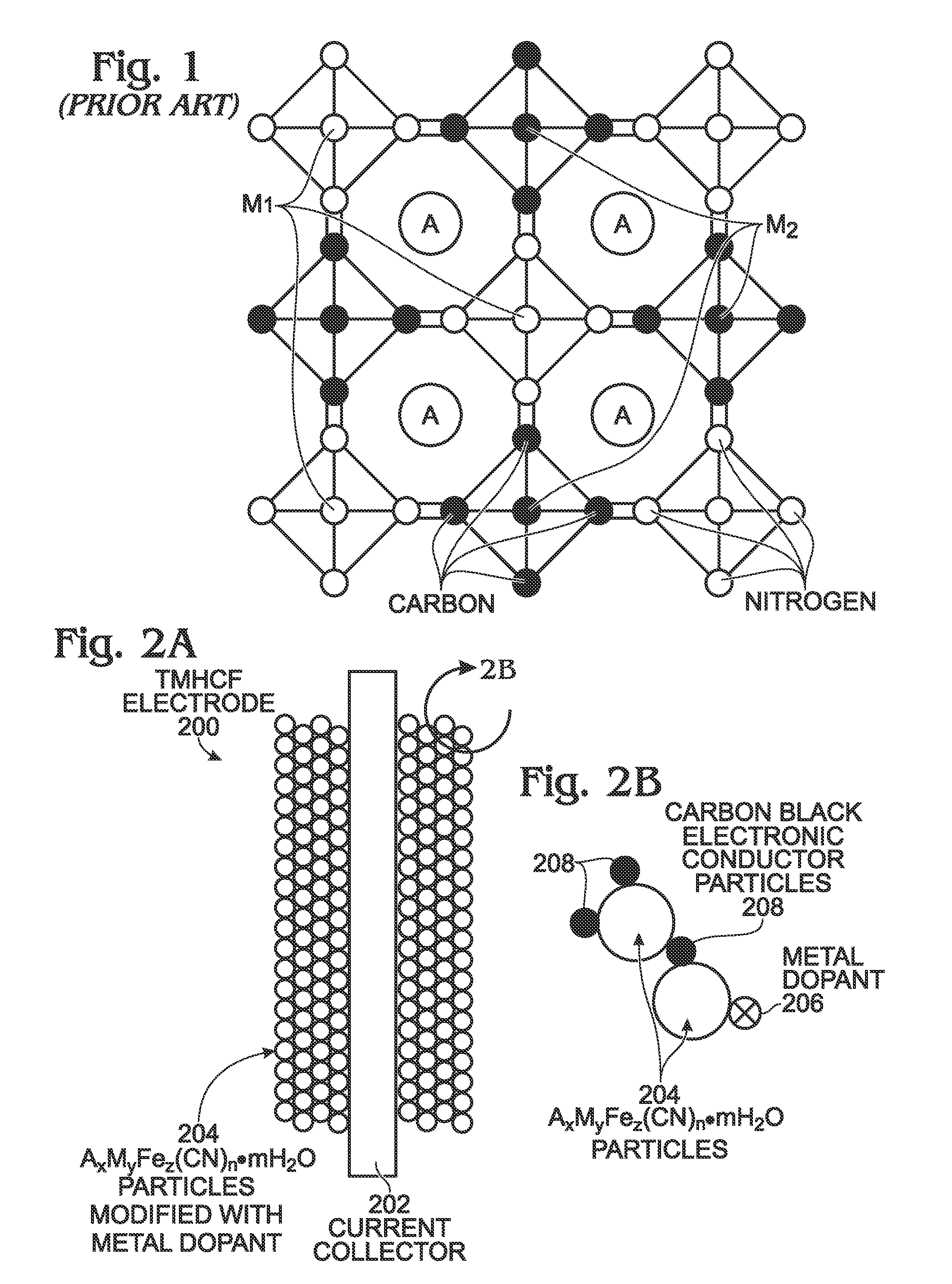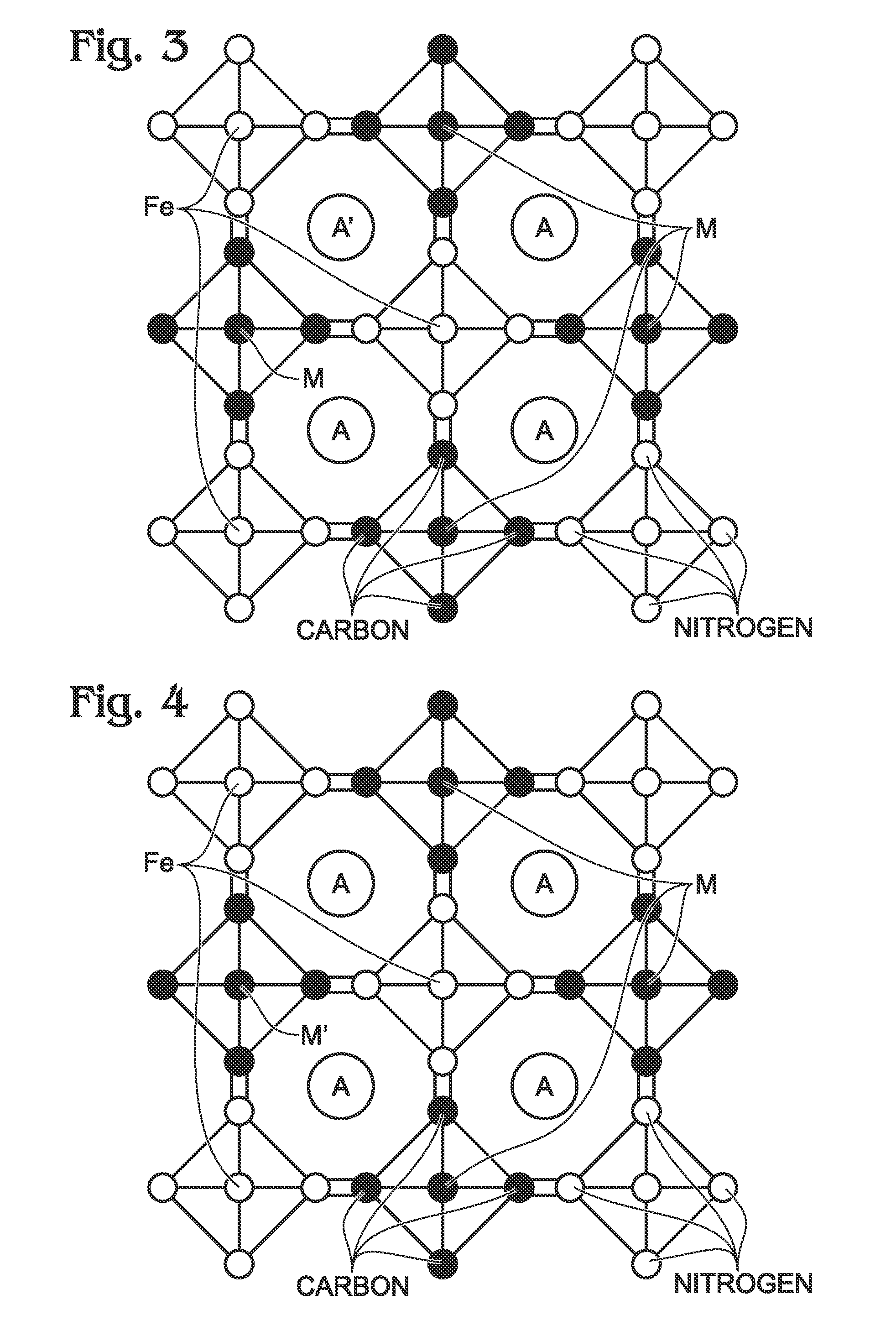Metal-Doped Transition Metal Hexacyanoferrate (TMHCF) Battery Electrode
a battery electrode and transition metal technology, applied in the field of electrochemical cells, can solve the problems of affecting the commercialization of lithium batteries as large-scale energy storage devices, and affecting so as to improve the performance of tmhcf, improve the electron transport effect, and stabilize the framework of tmh
- Summary
- Abstract
- Description
- Claims
- Application Information
AI Technical Summary
Benefits of technology
Problems solved by technology
Method used
Image
Examples
example one
Al0.05Mn0.95-HCF
[0072]Solution 1 was a Na4Fe(CN)6 water solution. Solution 2 included the Mn2+ and Al3+-ions. Solution 2 was dropped into Solution 1 slowly to form the precipitation of Al0.05Mn0.95-HCF. After separation, washing, and drying, Al0.05Mn0.95-HCF was used as an electrode in sodium-ion batteries with an electrolyte of saturated NaClO4 ethylene carbonate / diethylene carbonate (EC / DEC). For the purpose of comparison, Mn-HCF was synthesized under the same conditions.
[0073]FIGS. 5A and 5B are graphs comparing an aluminum-doped Mn-HCF (Al0.5Mn0.95-HCF) electrode to a Mn-HCF (undoped) electrode. The capacities were normalized by the maximum capacity of the Mn-HCF electrode during the first discharge. FIG. 5A depicts a comparison of the charge / discharge profiles of Mn-HCF and Al0.05Mn0.95-HCF electrodes after the first cycle. The doping with Al3+-ions increases the capacity of Mn-HCF electrode by about 15%. The electrodes were then cycled with currents of 0.1 C and 1 C. After 100...
example two
NaKMn-HCF
[0074]Solution 1 contained Na4Fe(CN)6 and K4Fe(CN)6. Solution 2 was a Mn2+ solution. Solution 1 and Solution 2 were mixed together to obtain NaKMn-HCF. For the purpose of comparison, Mn-HCF was synthesized under the same conditions. NaKMn-HCF was evaluated as an electrode in sodium-ion batteries with an electrolyte of saturated NaClO4 ethylene carbonate / diethylene carbonate (EC / DEC).
[0075]FIG. 6 is a graph depicting the capacity changes of Mn-HCF and NaKMn-HCF electrodes with cycling at different charge / discharge currents. Although the capacity of NaKMn-HCF was lower than that of Mn-HCF during initial cycles, it exhibited a better capacity retention. After 100 cycles, the normalized capacity of KNaMn-HCF was 111%, but that of Mn-HCF was 91% with a current of 0.1 C. In other words, the capacity retention increased 20% due to K+-ions doping. K+-ions are larger than Na+-ions, which supports the Mn-HCF structure and stabilizes it during charge / discharge cycling.
[0076]FIG. 7 is ...
PUM
| Property | Measurement | Unit |
|---|---|---|
| molar concentration | aaaaa | aaaaa |
| molar concentration | aaaaa | aaaaa |
| charge | aaaaa | aaaaa |
Abstract
Description
Claims
Application Information
 Login to View More
Login to View More - R&D
- Intellectual Property
- Life Sciences
- Materials
- Tech Scout
- Unparalleled Data Quality
- Higher Quality Content
- 60% Fewer Hallucinations
Browse by: Latest US Patents, China's latest patents, Technical Efficacy Thesaurus, Application Domain, Technology Topic, Popular Technical Reports.
© 2025 PatSnap. All rights reserved.Legal|Privacy policy|Modern Slavery Act Transparency Statement|Sitemap|About US| Contact US: help@patsnap.com



